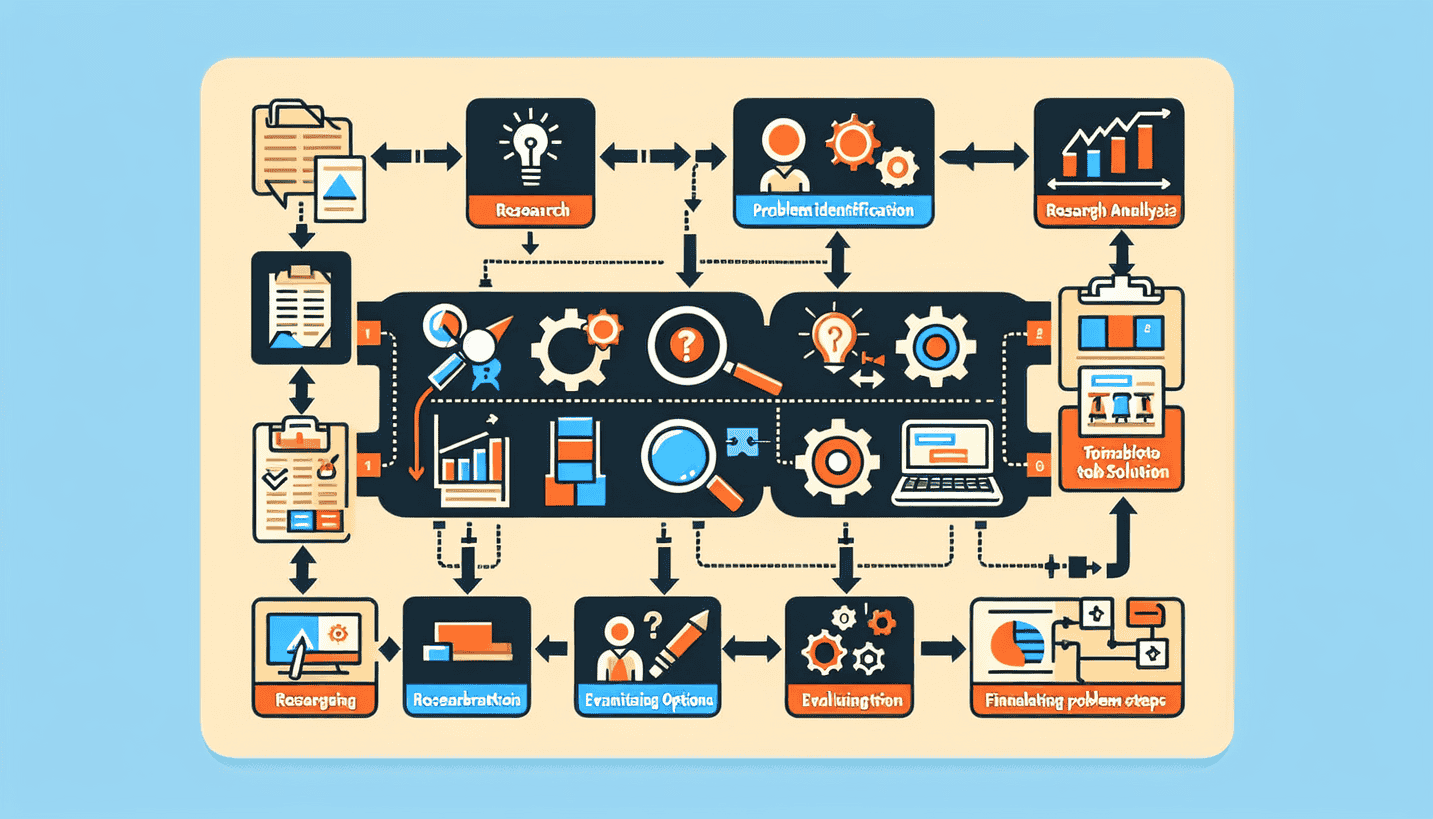Unlocking Success: Why Problem-Finders Are Your Secret Weapon!

In the fast-paced world of marketing, the spotlight often shines on those who deliver solutions, while the diligent problem-finders lurk in the shadows. But what if it’s the problem-finders who hold the key to unlocking true success? Solving problems is crucial, but the battle begins with pinpointing the right issues to tackle.
Section 1: The Dynamic Duo of Problem-Solving

The Unsung Heroes: In an environment fixated on immediate solutions, we often overlook a critical truth: it’s not just about solving problems but mastering the art of identifying them first. Problem-finders, those insightful individuals who see beyond the surface, are essential to any organization’s success. They don’t merely respond to challenges; they illuminate the underlying factors that create them.
A Narrow Focus on Solutions: When businesses adopt a one-dimensional perspective, the focus on immediate fixes can choke creativity and paralyze strategic thinking. Take, for instance, a major brand that faced declining consumer engagement. Their response was to ramp up advertising. However, had they paused to identify the root cause—shifting consumer preferences—they might have explored innovative product reformulations instead. This situation highlights how the lack of diverse problem identification can lead to missed opportunities.
Celebrating the Unsung Heroes: Let’s shift the narrative to portray problem-finders as the trailblazers they truly are. Industry leaders recognize that those who uncover the deeper challenges often spark the most groundbreaking solutions. “Identifying critical issues is like holding a treasure map; without it, we’ll wander aimlessly,” shares a seasoned strategist. By honoring problem-finders, organizations create an environment where creativity can thrive.
Section 2: The Art of Problem Gestation

Understanding Problem Gestation: Just as yeast ferments dough, ideas need time to rise. Problem gestation refers to the period of contemplation and exploration before rushing into solution mode. It’s in this incubation phase that innovative thoughts begin to blossom, allowing teams to analyze challenges from multiple angles and expose hidden layers.
Delay is Not Denial: Challenging the myth that any idle time is wasted is essential. Studies reveal that creativity flourishes when there is space for it to breathe. For example, a renowned software company instituted mandatory “reflection time” for their teams. The outcome? A surge in innovative ideas and solutions that transformed their product line.
Multi-Perspective Analysis: Embracing varying viewpoints is crucial in this stage. Companies that invest time in stakeholder feedback sessions or brainstorming workshops often uncover core issues that can guide strategic pivots. One tech leader shared, “After hosting a diverse ideation session, we realized our customers craved simplicity, prompting us to redesign our interface entirely—that shift changed everything.”
Creating a Creativity-Positive Environment: To nurture this incubation phase, organizations can adopt strategies such as flexible work hours that allow employees to explore their creativity fully. By fostering a culture of idea-sharing and brainstorming, companies can encourage problem gestation and, ultimately, more effective solutions.
Section 3: Idle Productivity: The Surprising Component of Innovation

Defining Idle Productivity: The term idle productivity may sound contradictory in a world obsessed with hustle culture, but it represents the notion that meaningful innovation often springs from moments of reflection rather than relentless activity. It’s about allowing thoughts to simmer and ideas to organically develop.
The Multiplier Effect of Creative Thinking: Consider a scenario where a marketing team is tasked with launching a new product. If they rush in, they might churn out mediocre concepts. However, if they take time for idle brainstorming, one clever idea can generate an overwhelming response—think of Apple’s game-changing iPod campaign. Rather than plethora of noisy advertising, a singular, creative approach generated new waves of consumer interest.
Connecting Idle Time to Business Outcomes: Companies that incorporate idle productivity into their daily throughput often see significant improvements in both morale and output. For instance, a case study revealed that an ad agency that instituted “thinking hours” not only enhanced employee satisfaction but also increased successful project outcomes by over 40%. Such findings illustrate how creating space for idle reflection can lead to substantive results.
Section 4: The Problem-Finding Process: Setting Up for Success

Steps to Identify the Right Problem: Identifying the right problem requires a systematic approach. Consider these guiding steps:
- Research: Conduct thorough market research and gather existing data.
- Engage Stakeholders: Host meetings with key stakeholders to gain various perspectives.
- Test Assumptions: Push back on initial assumptions, challenging the status quo to uncover deeper insights.
- Iterate Insights: Use the feedback gathered to refine the problem definition continually.
Frameworks for Problem Identification: Organizations can benefit from established models or frameworks that encourage structured problem identification. For instance, the Five Whys technique helps stakeholders dig deeper into the root causes of an identified issue, pushing beyond surface-level symptoms toward core challenges.
Empathy and Insight: Empathy plays a crucial role in this process; understanding consumer needs and market dynamics leads to insightful problem identification. As a marketing expert once stated, “Truly knowing your audience transforms the way you approach problem-solving.” This perspective not only yields better outcomes but also strengthens customer relationships.
Engaging with Fun Exercises: To spark creativity in problem-finding, consider hosting interactive workshops where teams engage in role-playing scenarios or creative list-making exercises. Such activities can stimulate innovative thinking and unearth issues that may otherwise remain obscure.
Section 5: Beyond Advertising: The Universal Application of Problem-Finding

The Broader Implications: The ability to identify the right problems goes far beyond advertising. This skill is invaluable across various sectors, from HR optimizing employee engagement to product development honing in on user experience improvements. When organizations adopt a holistic view of problem-finding, they elevate overall business agility.
Fostering a Culture of Inquiry: Cultivating an organization-wide culture of curiosity encourages every employee to become a problem-finder. Organizations can implement regular team workshops, suggestion schemes, and open forums to promote inquiry. A thriving culture of inquiry fosters continued personal growth and organizational success.
Real-World Examples: Tech giants like Google and innovative start-ups consistently embrace problem-finding across all teams, leading to exponential growth and creativity. Healthcare innovators use problem identification to redesign patient care systems to reflect actual needs, resulting in significant improvements. Such application illustrates that problem-finding can drive change in any domain.
In a world saturated with instant answers, champions of problem-finding are emerging as the catalysts for innovation and lasting success. By shining a light on the intricate art of identifying the right challenges to tackle, we can fundamentally shift the paradigm from reactive solutions to proactive strategies. So, take a moment to reflect on your own organizational challenges—what problems are waiting to be discovered? Building a toolkit of effective problem-finding strategies isn’t just beneficial—it’s essential for thriving in today’s complex landscape.